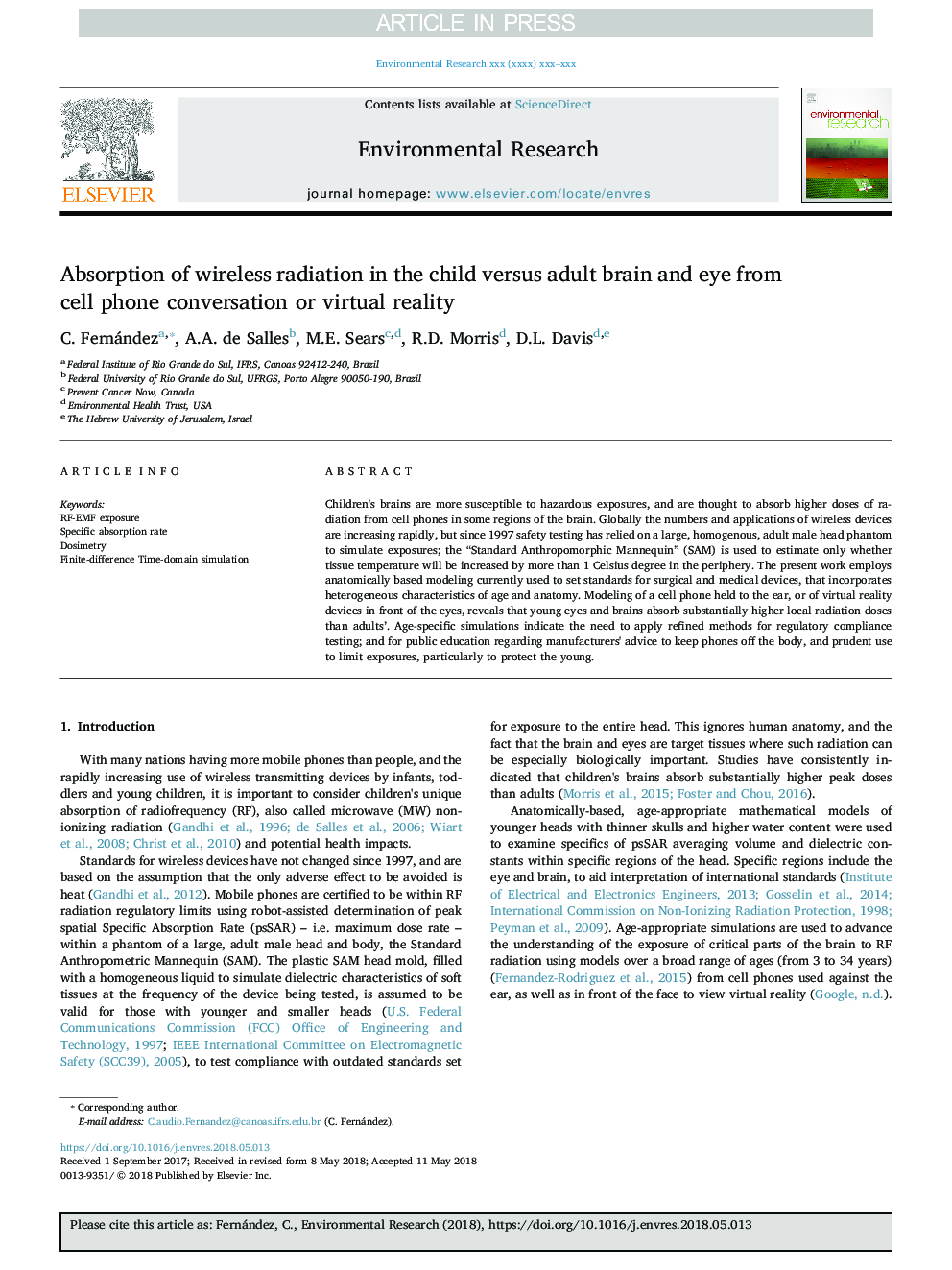| Article ID | Journal | Published Year | Pages | File Type |
|---|---|---|---|---|
| 11033331 | Environmental Research | 2018 | 6 Pages |
Abstract
Children's brains are more susceptible to hazardous exposures, and are thought to absorb higher doses of radiation from cell phones in some regions of the brain. Globally the numbers and applications of wireless devices are increasing rapidly, but since 1997 safety testing has relied on a large, homogenous, adult male head phantom to simulate exposures; the “Standard Anthropomorphic Mannequin” (SAM) is used to estimate only whether tissue temperature will be increased by more than 1 Celsius degree in the periphery. The present work employs anatomically based modeling currently used to set standards for surgical and medical devices, that incorporates heterogeneous characteristics of age and anatomy. Modeling of a cell phone held to the ear, or of virtual reality devices in front of the eyes, reveals that young eyes and brains absorb substantially higher local radiation doses than adults'. Age-specific simulations indicate the need to apply refined methods for regulatory compliance testing; and for public education regarding manufacturers' advice to keep phones off the body, and prudent use to limit exposures, particularly to protect the young.
Keywords
Related Topics
Life Sciences
Environmental Science
Health, Toxicology and Mutagenesis
Authors
C. Fernández, A.A. de Salles, M.E. Sears, R.D. Morris, D.L. Davis,
